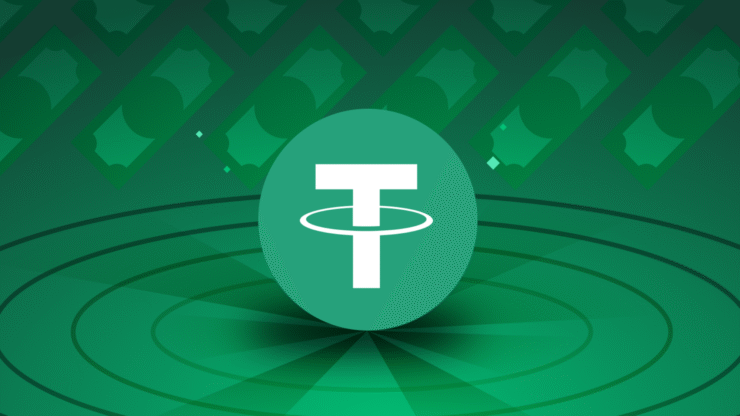Tether has officially surpassed Germany in U.S. Treasury holdings, cementing its place as a significant player in global finance. With more than $120 billion in Treasury bills under management, the world’s leading stablecoin issuer now ranks 19th globally among sovereign and institutional holders, according to newly released Q1 2025 data.
The milestone marks a strategic victory for Tether’s conservative reserve model. By backing its $151 billion USDT stablecoin with a mix of highly liquid assets—including U.S. Treasuries and gold—the firm has demonstrated resilience in the face of crypto market volatility. According to its latest attestation report, this approach not only mitigated downside risks but also delivered strong operating profits during a turbulent quarter for digital assets.
Germany, which held approximately $111.4 billion in U.S. Treasury bills, now trails the stablecoin issuer in this key economic metric. The development is a striking example of how private crypto firms are beginning to rival—or even surpass—nation-states in traditional asset holdings.
Tether noted that the achievement “reinforces its role in distributing dollar-based liquidity at scale,” a responsibility typically reserved for central banks and global financial institutions.
Tether Earns $1B as Treasury Strategy Pays Off
Tether has emerged as a top-tier global buyer of U.S. Treasuries, outpacing several major economies in 2024 and reinforcing its position as a financial heavyweight far beyond the stablecoin market. According to data cited by Tether CEO Paolo Ardoino, Tether ranked seventh among all countries in Treasury acquisitions, surpassing sovereign holders like Canada, Taiwan, Mexico, and Norway.
The firm’s massive exposure to U.S. government debt—a highly liquid and low-risk asset—underscores its strategy of anchoring the value of USDT, its dollar-pegged stablecoin, in traditional financial instruments. This conservative reserve model has proven instrumental in shielding Tether from the crypto market’s volatility, especially during the rocky first quarter of 2025.
According to its latest attestation, Tether generated over $1 billion in operating profit during Q1, driven largely by the performance of its Treasury portfolio. The report also noted that while crypto markets fluctuated sharply, the firm’s gold holdings helped offset much of that volatility, contributing to the overall stability of its reserves.
U.S. Stablecoin Bills Could Shape Tether’s Future
As stablecoin regulation gains momentum in the United States, Tether could be poised for even greater growth—especially if new laws help legitimize and expand the use of dollar-backed digital currencies. Greater regulatory clarity could lead to increased adoption of USDT, with inflows partially allocated to boost Tether’s already massive U.S. Treasury reserves.
Two key legislative proposals are currently in play. The STABLE Act (Stablecoin Transparency and Accountability for a Better Ledger Economy) passed the House Financial Services Committee on April 2 with a 32–17 vote and now awaits a full House debate and floor vote. The bill aims to enforce transparency and accountability standards for issuers like Tether, potentially unlocking broader institutional engagement.
However, progress on the competing Guiding and Establishing National Innovation for U.S. Stablecoins (GENIUS) Act has stalled. The bill hit resistance on May 8 amid political disagreements, with some Democratic lawmakers reportedly concerned over former President Donald Trump’s possible financial stake in the stablecoin ecosystem through family-linked crypto ventures.
Despite the gridlock, the industry has shown strong support for the GENIUS Act’s objectives. On May 14, more than 60 of the crypto sector’s leading founders met in Washington, D.C., to rally behind the bill. It proposes strict collateral requirements and mandates full Anti-Money Laundering (AML) compliance—factors that could enhance credibility and drive adoption among mainstream users and institutions.
For Tether, regulatory traction in Washington could translate into greater legitimacy, deeper market penetration, and expanded reserves. With U.S. lawmakers increasingly focused on stablecoin policy, the outcome of these bills may play a pivotal role in shaping the next phase of digital dollar dominance.
Quick Facts
- Tether now holds over $120 billion in U.S. Treasury bills, surpassing Germany and ranking 19th globally among institutional and sovereign holders.
- In Q1 2025, Tether generated over $1 billion in profit, largely due to gains from its Treasury and gold reserves used to back USDT.
- U.S. lawmakers are advancing two competing stablecoin bills—the STABLE Act and GENIUS Act—both of which could significantly affect Tether’s growth.
- Tether’s rising influence reflects a broader trend of private crypto firms entering roles traditionally held by central banks and national treasuries.





